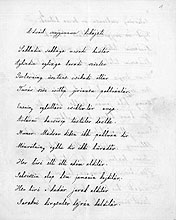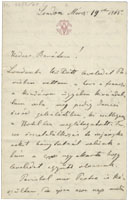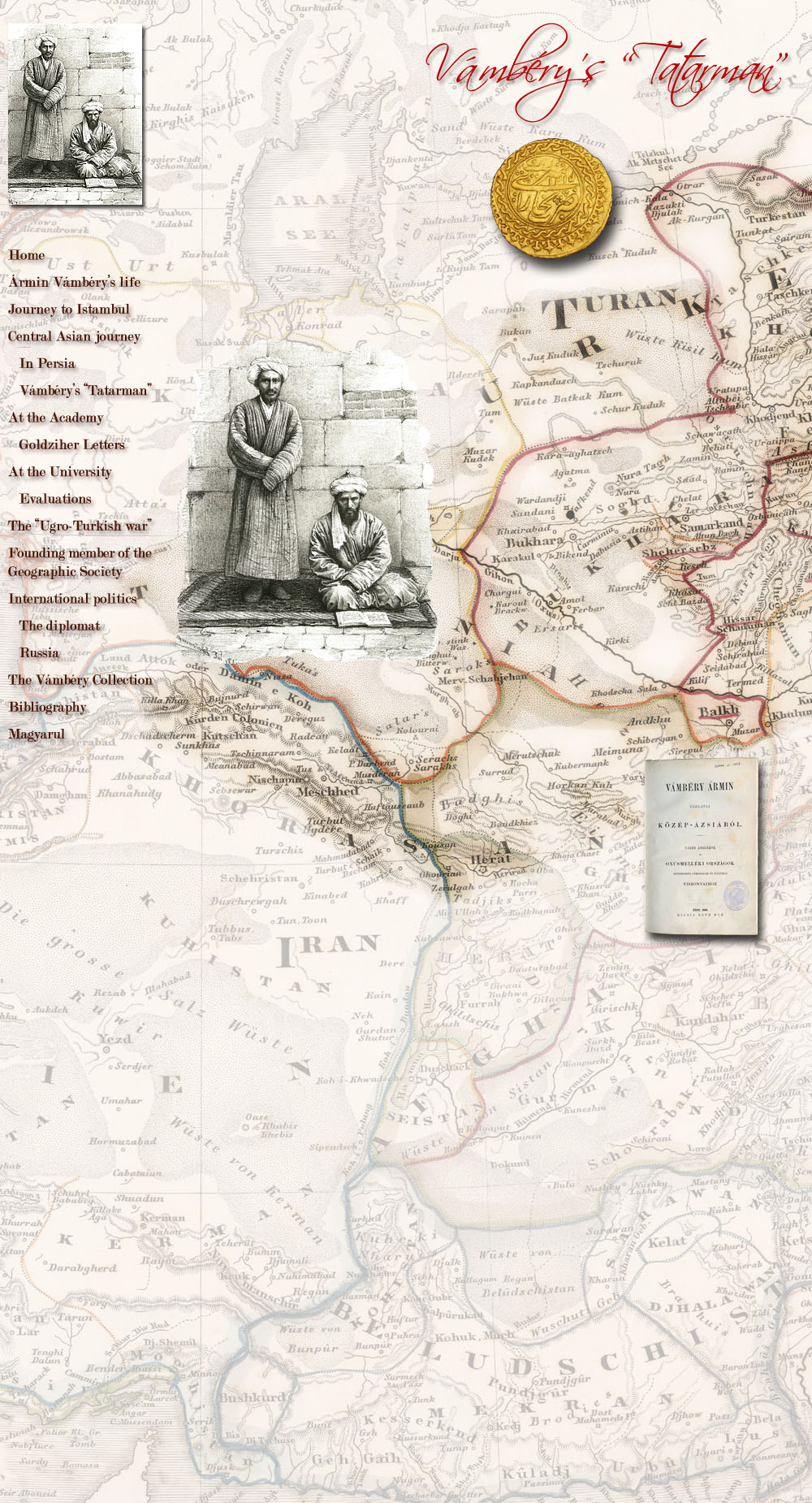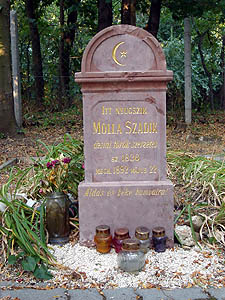
Mullah
Ishak (c. 1841–1892), or, as Vámbéry called him, Izsák Csagatáj, joined in
July 1863 in Qumrat the group of pilgrims heading to Samarkand of which Vámbéry
was a member. In his
Sketches from Central Asia, Vámbéry devoted a
chapter to Mullah Ishak,
1 but otherwise little is known about his life. His original
destination was a pilgrimage to Mecca, but after his chosen master gradually
revealed his true identity during the common journey, he got before a difficult
decision, in which the personal influence of Vámbéry proved stronger than
his religious zeal and original purpose. In Istanbul he decided to also follow
Vámbéry to Budapest, where he started a new life: he learned Hungarian, and from
1864 he started to work in the Library of the Academy as a library assistant.


 During
his journey to England, Vámbéry entrusted Ishak to the patronage of József
Budenz, and then in the summer of 1864 he went to Kiskunhalas, to Áron Szilády.
2
In the postscripts of his letters written to Szilády, Vámbéry regularly refers
to “his mullah”. After returning to Hungary, Vámbéry noticed, how quickly Mullah
Ishak adapted himself to his new environment in his clothing, behavior and the
learning of the Hungarian language. The openness and adaptability of Ishak
obviously inspired Vámbéry, the devoted admirer of the European civilization,
who considered him a living example of the religious Eastern people who
nevertheless can be won for the achievements of the West.
3
During
his journey to England, Vámbéry entrusted Ishak to the patronage of József
Budenz, and then in the summer of 1864 he went to Kiskunhalas, to Áron Szilády.
2
In the postscripts of his letters written to Szilády, Vámbéry regularly refers
to “his mullah”. After returning to Hungary, Vámbéry noticed, how quickly Mullah
Ishak adapted himself to his new environment in his clothing, behavior and the
learning of the Hungarian language. The openness and adaptability of Ishak
obviously inspired Vámbéry, the devoted admirer of the European civilization,
who considered him a living example of the religious Eastern people who
nevertheless can be won for the achievements of the West.
3
 Between
1872 and 1878 Ishak traveled in Hungary and probably also beyond the borders of
the country, and in 1879 and 1892 his name occurs again among the officials of
the Academy.
4 He was understandably watched with a great interest among Vámbéry’s
friends and scholarly acquaintances, and the general curiosity and popularity
surrounding him is well attested by the surviving anecdotes and beliefs about
him.
5 His knowledge of the Hungarian language is illustrated by his
translation into Uzbek of the Legend of the miracle stag by János Arany,
a poetic reconstruction of the legend of origin of the Hun and Hungarian peoples (Adsáib szujgunnun hikájeti),
6 but he also supported Vámbéry as a “living dictionary”. He founded
a family, had children, and never denied the Islam. He suffered from emphysema,
traveled to the village of Velence to treat his illness, and eventually died
there. On Vámbéry’s intervention he received Muslim funerals in the Calvinist
cemetery of Velence. His headstone bears the inscription Molla Sadik (“the
faithful mullah”).
Between
1872 and 1878 Ishak traveled in Hungary and probably also beyond the borders of
the country, and in 1879 and 1892 his name occurs again among the officials of
the Academy.
4 He was understandably watched with a great interest among Vámbéry’s
friends and scholarly acquaintances, and the general curiosity and popularity
surrounding him is well attested by the surviving anecdotes and beliefs about
him.
5 His knowledge of the Hungarian language is illustrated by his
translation into Uzbek of the Legend of the miracle stag by János Arany,
a poetic reconstruction of the legend of origin of the Hun and Hungarian peoples (Adsáib szujgunnun hikájeti),
6 but he also supported Vámbéry as a “living dictionary”. He founded
a family, had children, and never denied the Islam. He suffered from emphysema,
traveled to the village of Velence to treat his illness, and eventually died
there. On Vámbéry’s intervention he received Muslim funerals in the Calvinist
cemetery of Velence. His headstone bears the inscription Molla Sadik (“the
faithful mullah”).
 Mullah
Ishak (c. 1841–1892), or, as Vámbéry called him, Izsák Csagatáj, joined in
July 1863 in Qumrat the group of pilgrims heading to Samarkand of which Vámbéry
was a member. In his Sketches from Central Asia, Vámbéry devoted a
chapter to Mullah Ishak,
1 but otherwise little is known about his life. His original
destination was a pilgrimage to Mecca, but after his chosen master gradually
revealed his true identity during the common journey, he got before a difficult
decision, in which the personal influence of Vámbéry proved stronger than
his religious zeal and original purpose. In Istanbul he decided to also follow
Vámbéry to Budapest, where he started a new life: he learned Hungarian, and from
1864 he started to work in the Library of the Academy as a library assistant.
Mullah
Ishak (c. 1841–1892), or, as Vámbéry called him, Izsák Csagatáj, joined in
July 1863 in Qumrat the group of pilgrims heading to Samarkand of which Vámbéry
was a member. In his Sketches from Central Asia, Vámbéry devoted a
chapter to Mullah Ishak,
1 but otherwise little is known about his life. His original
destination was a pilgrimage to Mecca, but after his chosen master gradually
revealed his true identity during the common journey, he got before a difficult
decision, in which the personal influence of Vámbéry proved stronger than
his religious zeal and original purpose. In Istanbul he decided to also follow
Vámbéry to Budapest, where he started a new life: he learned Hungarian, and from
1864 he started to work in the Library of the Academy as a library assistant.





















